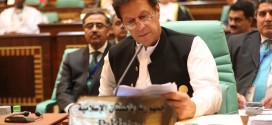Textile sector is the backbone and single largest sector of our economy, contributing to 55% of our total exports, providing 38% jobs in the manufacturing sector and contributes 8.5% of the GDP.
During the year 2010-11, the textile sector has shown tremendous growth; our textile exports rose by 35% to $13.8 billion which has boosted our total export to more than $25 billion.
All the world renowned brands like Levi’s, GAP, Nike, Addidas, Jordache, Diesel, Polo etc. are manufactured in Pakistan. We have the state-of-art plant and machinery with the skilled labour. Pakistani lawn, bed linen and denim fabric have made their name worldwide. Our textile industry that started from zero has now become the hub of the buyers of world renowned brands. We are supplying quality textile products to 180 million people in Pakistan, in addition to earning about $14 billion foreign exchange for the country.
Our textile industry has made substantial investment of more than $8 billion during 2002 to 2007 under BMR to acquire latest technology and to expand our production capacity.
In spite of all these achievements, our textile industry still lacks in value addition. In ’80s and ’90s, due to 30% to 40% cheaper local cotton prices compared to international market, Pakistan was the largest exporter of cotton yarn and third largest exporter of the fabrics including grey fabrics. All the leading Japanese trading houses were buying bulk quantity yarn from Pakistan but due to contamination in cotton and yarn we gradually lost Japanese buyers and our exporters shifted to the low-end Hong Kong and Bangladesh markets.
Due to increase in the local cotton prices at par with international market, some of the textile group switched over to value addition products like knitting, home textile, woven garments, jeans and towels and started to export value-added textile products instead of exporting raw material like cotton and yarn.
Pakistan has truly not benefited from the worldwide research and development in the field of agriculture, that is, the usage of new seeds and varieties, as a result Pakistan has the lowest peracre yield.
Our cotton production remained around 12 million bales per annum whereas India with the usage of BT cotton seeds, increased their per acre yield by 40% enhancing their cotton production from 18 million bales to 34 million bales per annum. India is now one of the cotton exporting countries which are running in surplus. Pakistan also started using BT cotton in the last 2-3 years which has improved our cotton production but due to the flood in the country for two consecutive years we lost about 4 million cotton bales; two in each year.
All the major cotton producing countries like USA, India, China, Pakistan are expecting this year a bumper cotton crop of total 126 million bales which is 11% higher than last year production of 114 million bales, mainly due to increase in cotton production of China by 13%, Pakistan 19%, India 9%, Australia 23% and Turkey 42%.
According to Textalk International survey this year the world cotton consumption is expected 116 million bales which is 3% less than last year. As such, with 11% increased in cotton production and 3% decreased in cotton consumption, there will be a surplus this year with all the major cotton producing countries, which will result decrease in cotton prices in Pakistan and International market as well.
I was told that lot of Indians residing in US specially request to send them Pakistani bed linen and other home textile products due to their innovative colours, designs and affordable prices.
India and China have huge markets of about 2.5 billion people and with the increase in purchasing power of their middle-class; there is great demand of Pakistani textile products. Therefore, I strongly recommend our manufacturers and exporters of the value-added textile to enter into joint ventures with their local brands to get a lion’s share of their huge markets.
We will be Insha’Allah soon getting a duty free market access to the EU after India withdrawing their objection at WTO on EU trade concession to Pakistan and expecting an additional, about $1 billion, export to the EU in next three years.
In lines with implementation of South Asia Free Trade Agreement (SAFTA), Pakistan, we will be allowing import of a large number of items from India which are on our negative list, a step towards trade liberalisation with India will give a large export market to our textile products.
Pakistan has also entered in the second phase of FTA with China on the January 1, 2012, allowing a large number of value-added textile products duty free exports to China including readymade garments.
Our textile exports to Turkey particularly grey and denim fabric, woven garments have been seriously affected due to imposition of protective duties by Turkish government to safeguard their local textile industry.
Government of Pakistan is negotiating with Turkey to sign a Preferential Trade Agreement (PTA). The PTA will automatically void additional protective duties imposed on our textile products by Turkey, paving way to again open our textile export to Turkish market. Me being a part of said initiatives and efforts in the process, strongly feel that year 2012 will be a promising year for the value added textile sector of Pakistan.
 Jahangir's World Times First Comprehensive Magazine for students/teachers of competitive exams and general readers as well.
Jahangir's World Times First Comprehensive Magazine for students/teachers of competitive exams and general readers as well.


